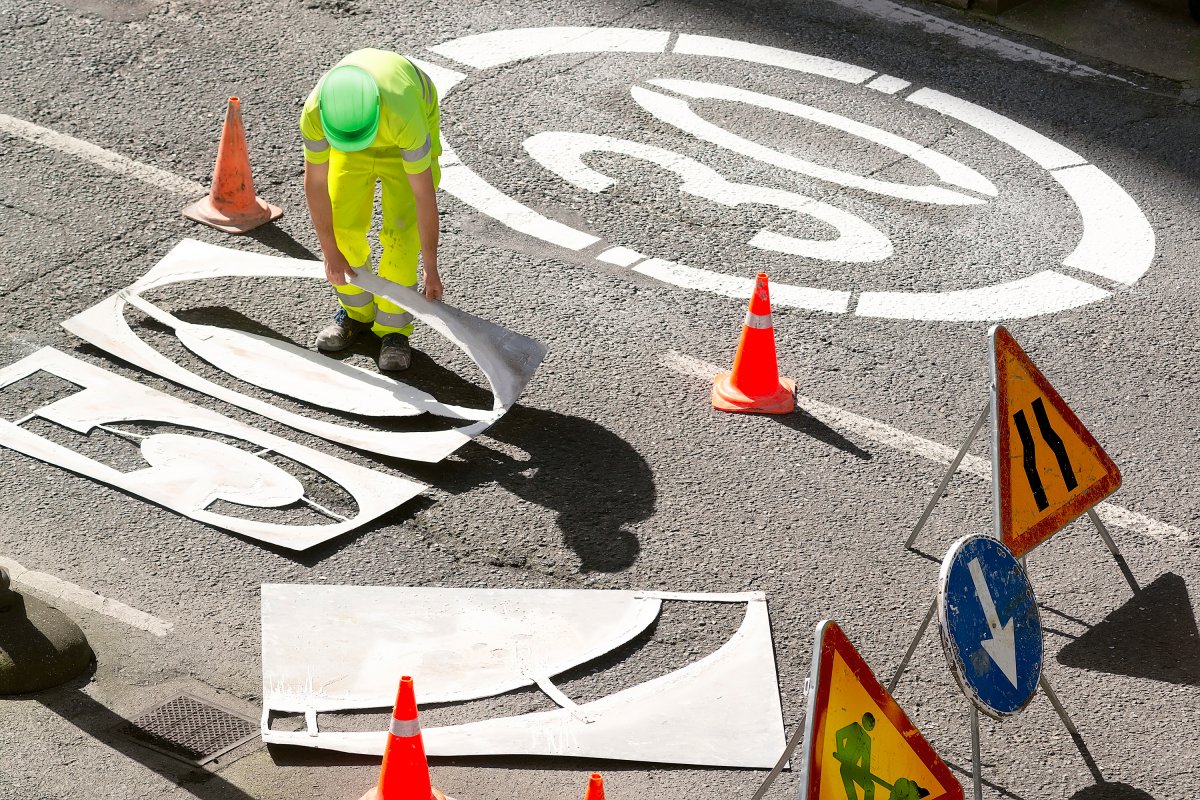Two years ago, Aachen, Augsburg, Freiburg, Hanover, Leipzig, Münster and Ulm founded the initiative “Cities worth living through reasonable speeds”. The cities want to decide for themselves when and where to set the pace. Almost 800 municipalities have now joined this initiative. And the federal government apparently also responded: the cabinet decided on Wednesday to expand the Road Traffic Act (StVG). It now gives the municipalities more leeway in the design of their transport. “This would fulfill one of the core requirements of the initiative,” says their website.
Advertisement
The new StVG not only mentions “ease and safety” of traffic as a goal, but also “climate and environmental protection, health and urban development” with equal priority. It sets a new framework for the Road Traffic Act (StVO). The specific changes must then be recorded there.
So far, the StVO has “put unnecessary hurdles in the way of municipalities” and makes “appropriate action sometimes impossible,” according to the initiative – for example when creating parking spaces for residents, zebra crossings or bus lanes. In addition, paragraph 45 of the StVO stipulates that a speed limit of 30 “can only be ordered in the event of specific hazards or in front of social facilities such as daycare centers and schools”. (However, a study by the Leibniz Institute for Regional Geography found that many municipalities have not used their legal leeway.)
Gregor Honsel has been a TR editor since 2006. He believes that many complex problems have simple, easy-to-understand, but wrong solutions.
Arrange Tempo 30 – where it is necessary
The initiative now calls for the road traffic regulations to be revised quickly. However, it is still unclear what freedom the cities and municipalities will then really have. If you listen to the rhetoric of Federal Motor Transport Minister Volker Wissing, you shouldn’t expect too much. It starts with the choice of words. Again and again he speaks out against a “widespread” Tempo 30. Nobody asked for that. The municipalities only want to be able to order Tempo 30 where they consider it necessary.
“Safety and ease” of traffic remain the main goals of the Road Traffic Act, says Wissing. But what exactly can he mean by “ease” if not that of car traffic? In any case, pedestrian and bicycle traffic would not be made particularly difficult by a speed limit of 30 km/h. And if something really serves safety, then probably 30 km/h. But Wissing probably didn’t mean it that way.
Advertisement
Of course, the “freedom” must not be missing either. The core task of the state is to justify “interference with freedom”, says Wissing. Municipalities would therefore still have to justify themselves if they wanted to identify 30 km/h zones. A lighter arrangement of Tempo 30 regulations should only exist in playgrounds and high-traffic school and pedestrian crossings.
The freedom of drivers
For Wissing, freedom is obviously – here again completely unquestioned – the freedom of the car driver. But what about the freedom of the municipalities to regulate their own affairs without having to constantly ask the federal government? At every opportunity, the FDP pays homage to “personal responsibility” and the “principle of subsidiarity” – i.e. the principle that local decisions should be made by local actors as far as possible without interference from above. But when would personal responsibility and subsidiarity be more appropriate than in the case of inner-city transport? Who should know better what works locally and what doesn’t than the elected local politicians?
Equally obscure is Wissing’s argument that through traffic would “search its way through residential areas” if the speed limit was 30. Why should he? Traffic could also be channeled through priority rules, for example. If you had the choice between a priority road and a right-before-left residential area, which way would you take it? Even. And if necessary, a municipality can still identify 50 km/h through streets.
Basically, the whole debate is mainly about annoyed drivers. The FDP tries to conceal this by constantly promoting the most powerful values that are currently within reach: “freedom”, “security”, “ease”.
Yes, 30 km/h annoys me too when I’m driving with a motor vehicle. I also like to drive faster. But: so what? We can’t make all of politics dependent on what annoys us and what doesn’t.
(hrm)
To home page
